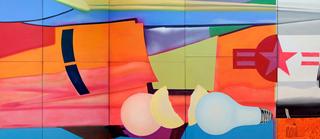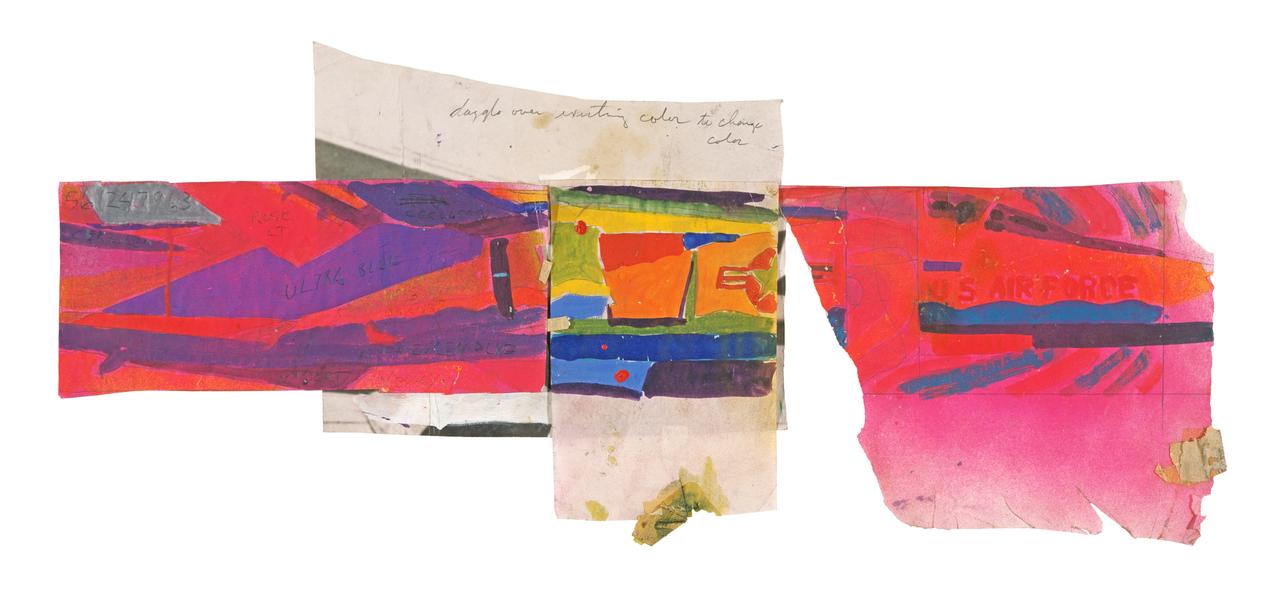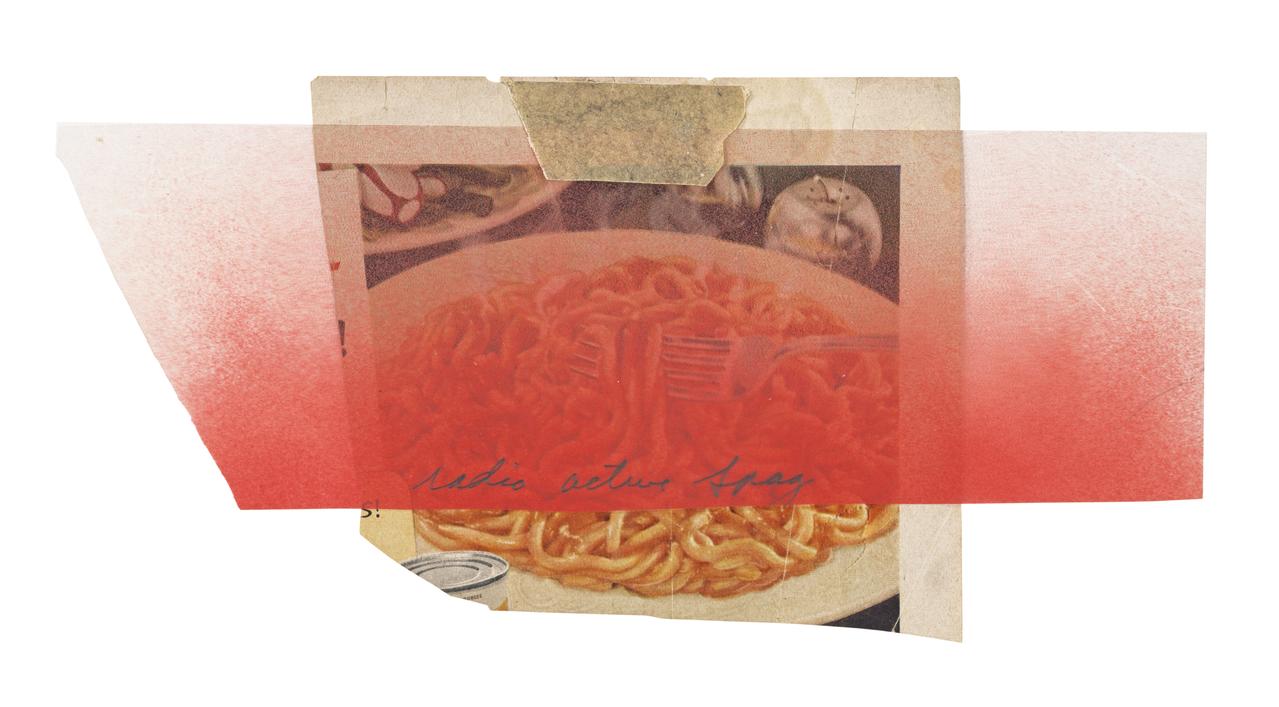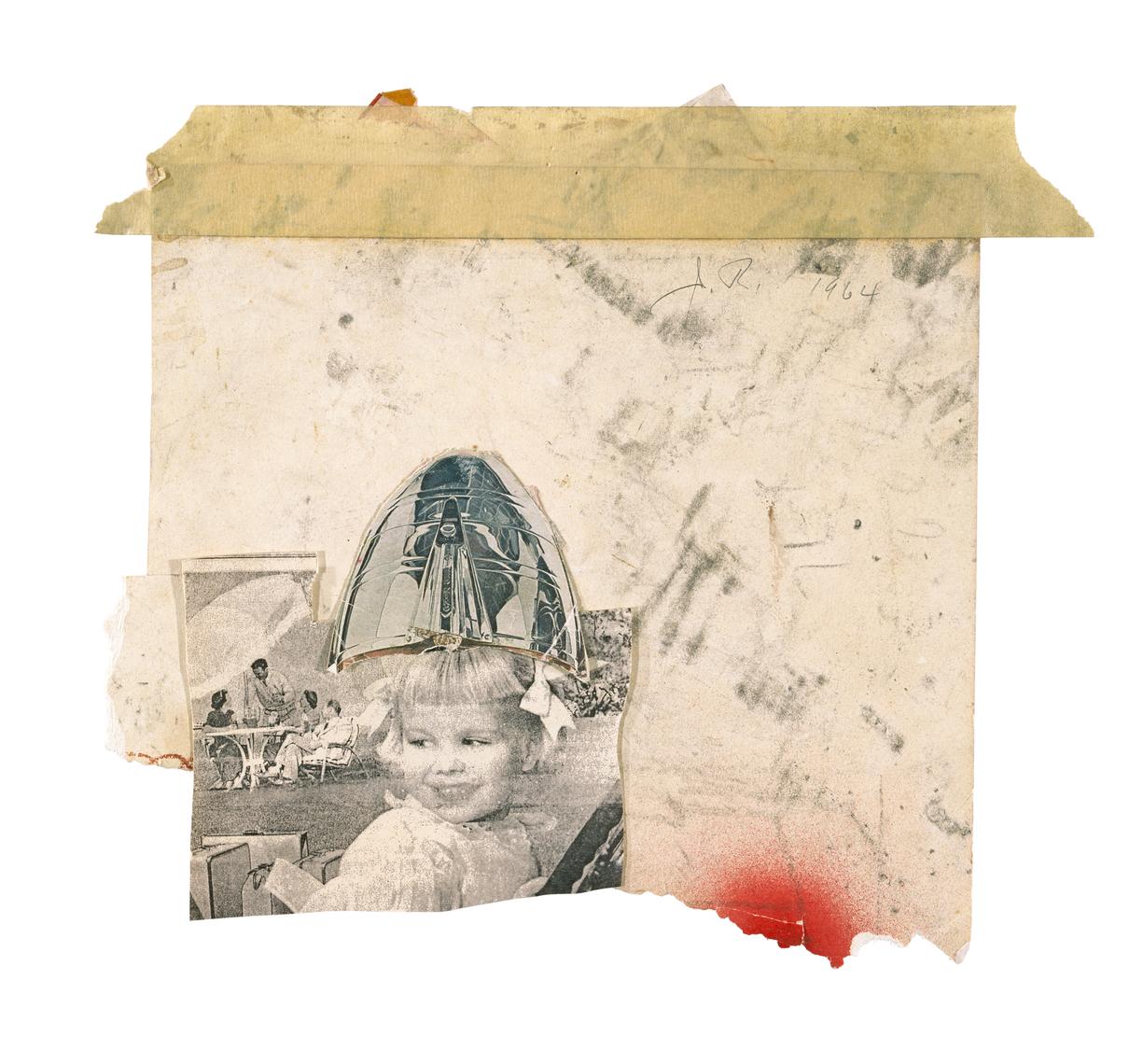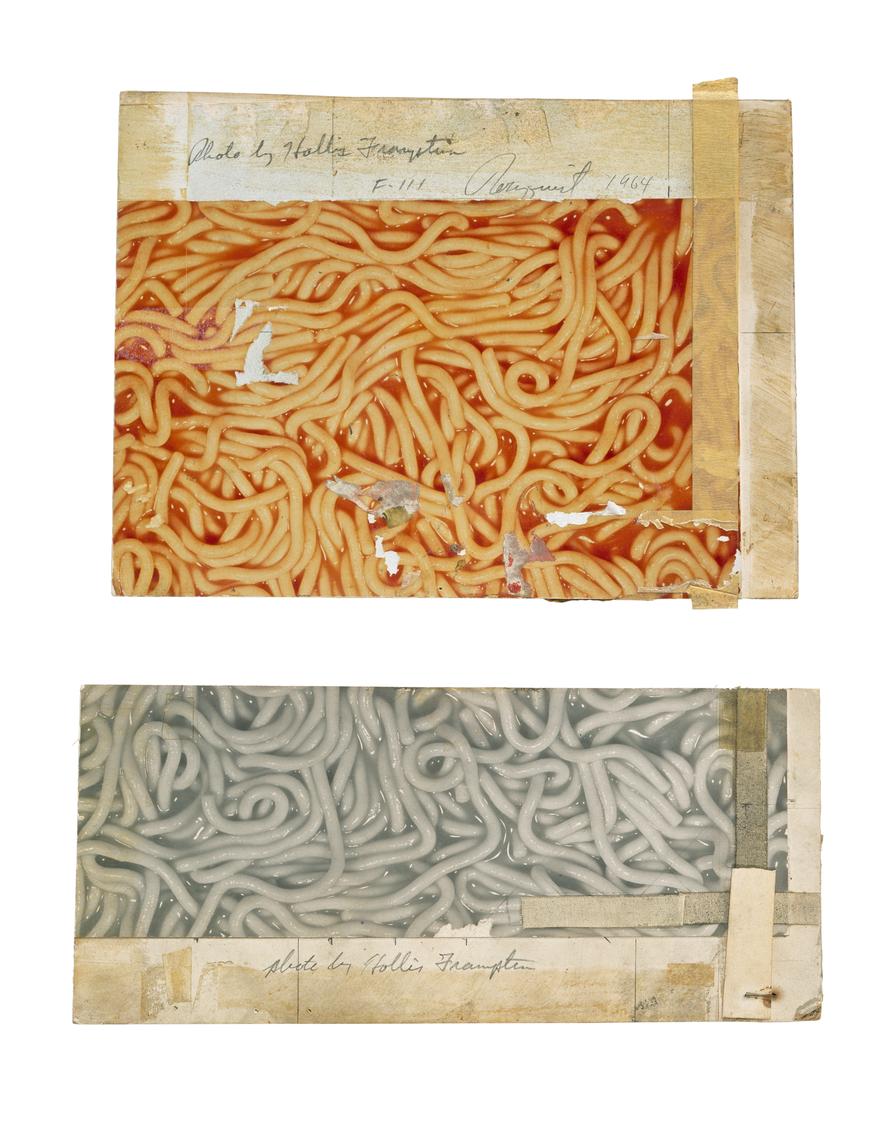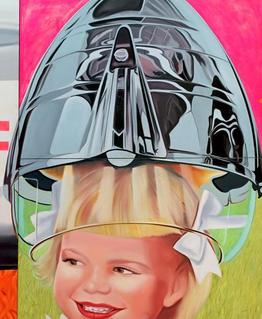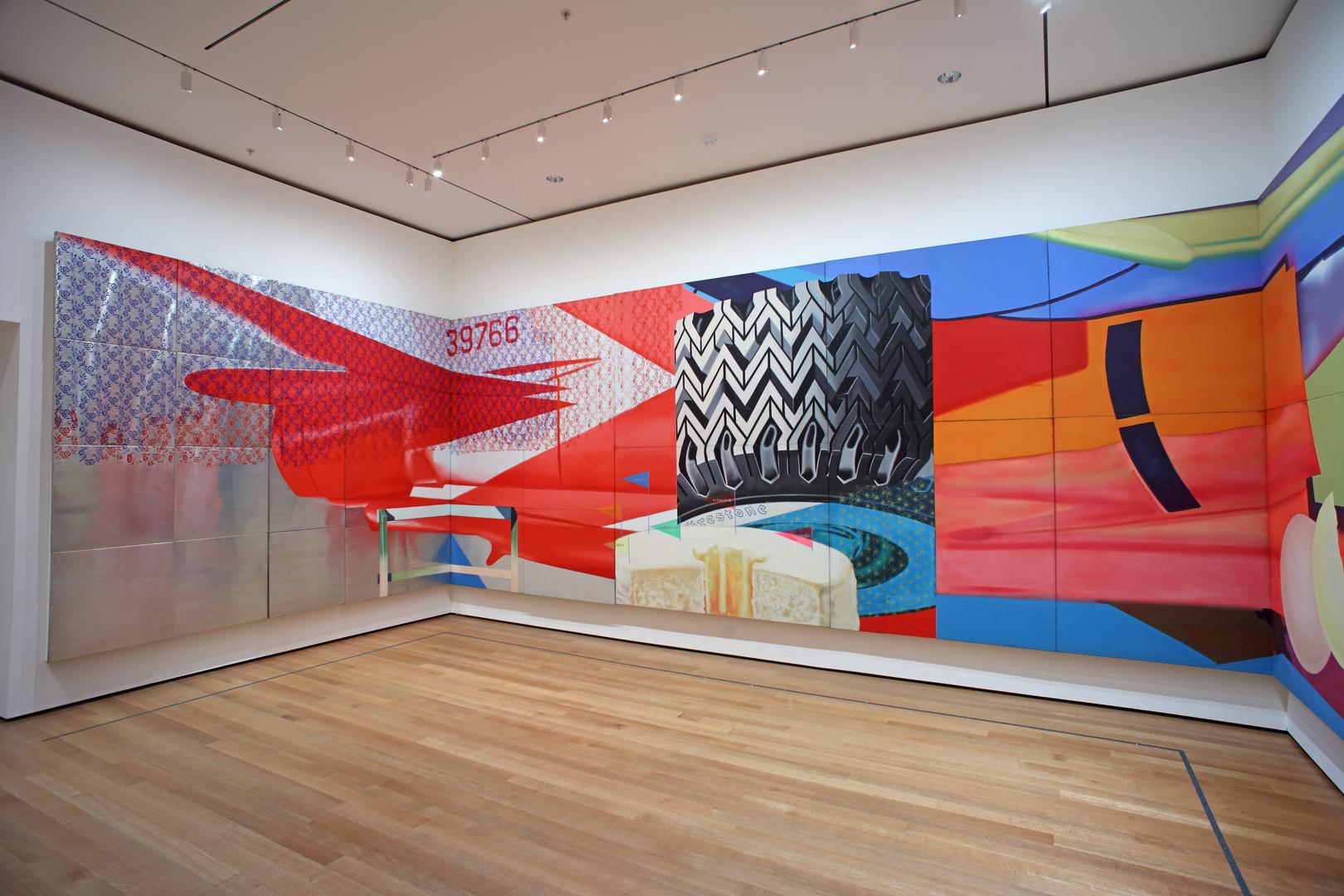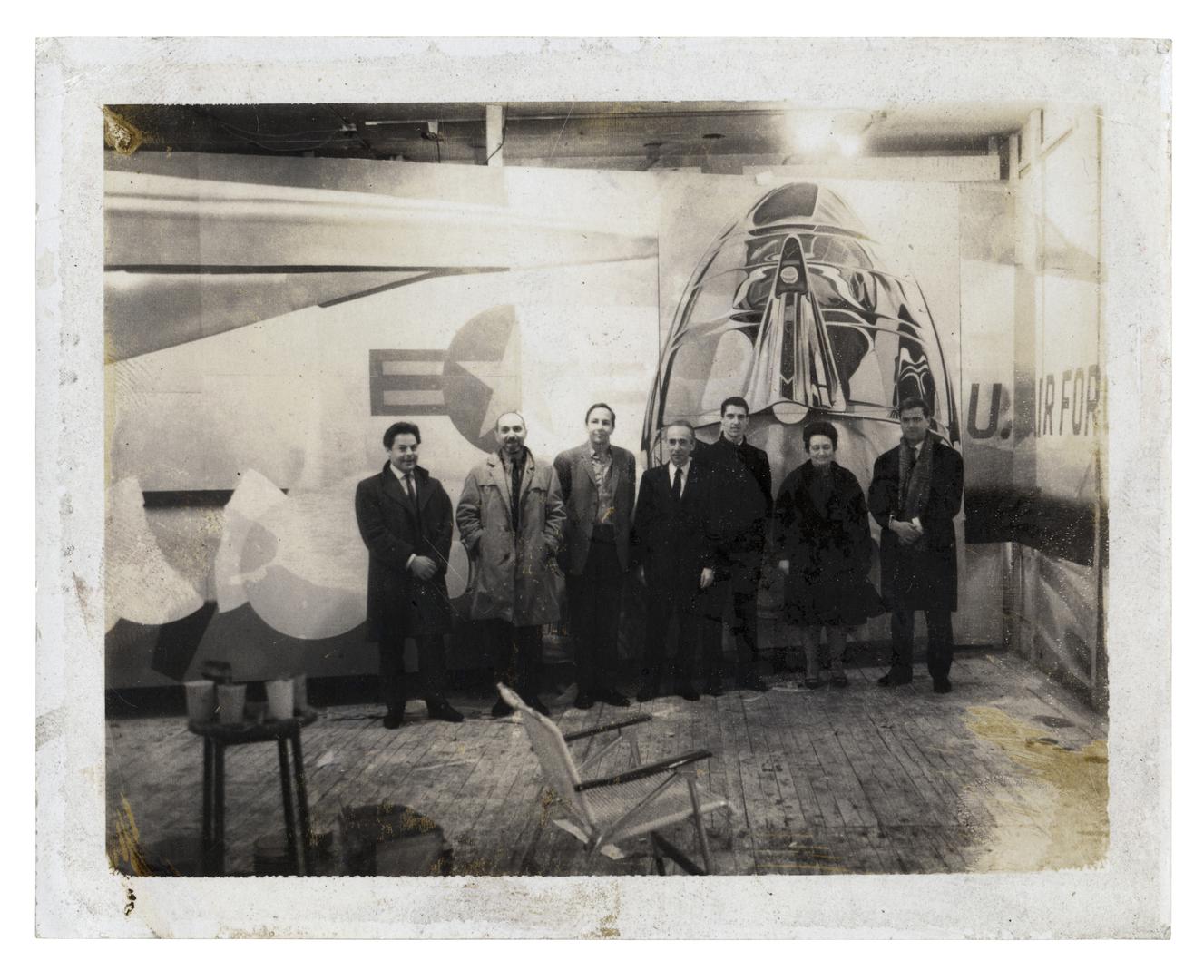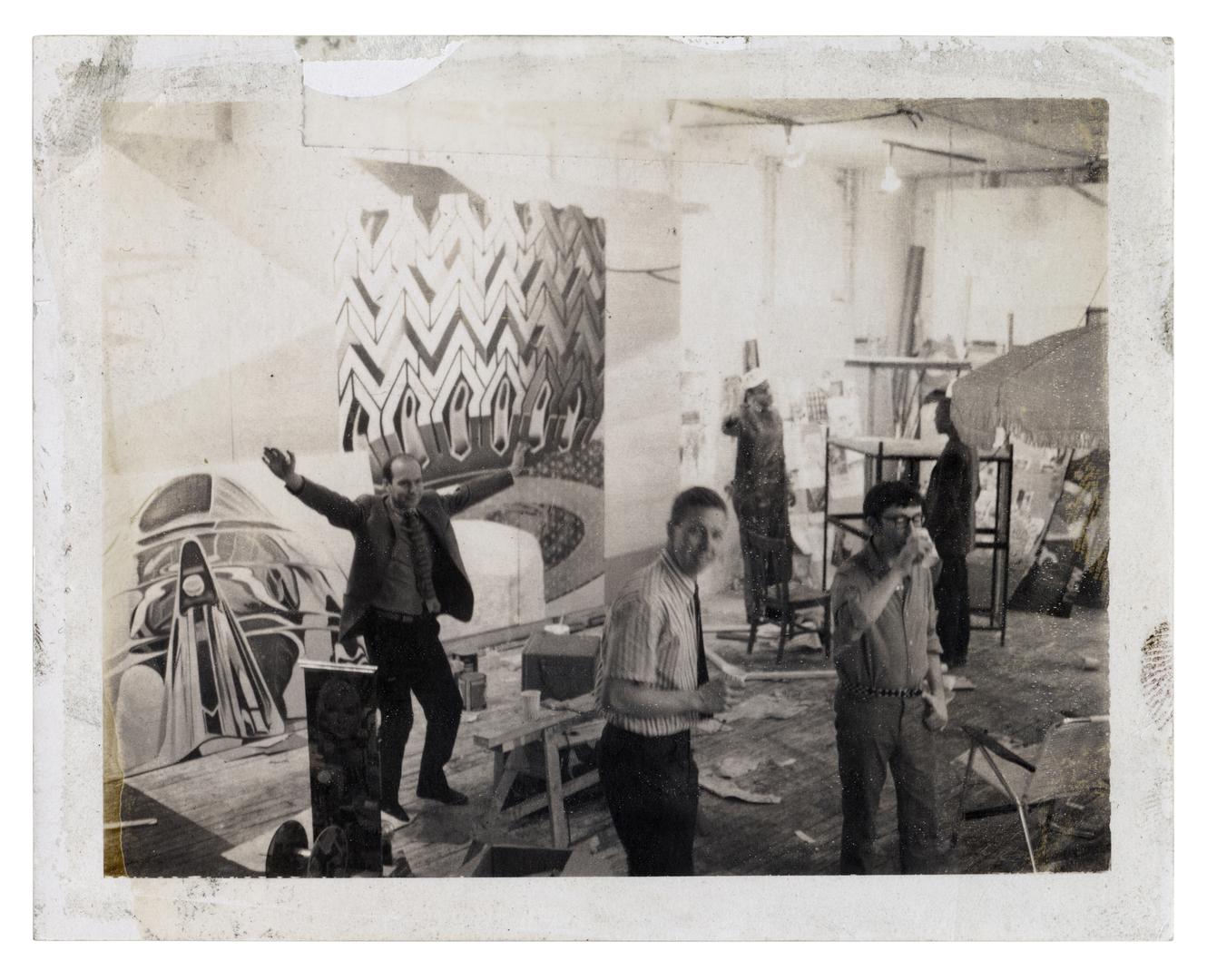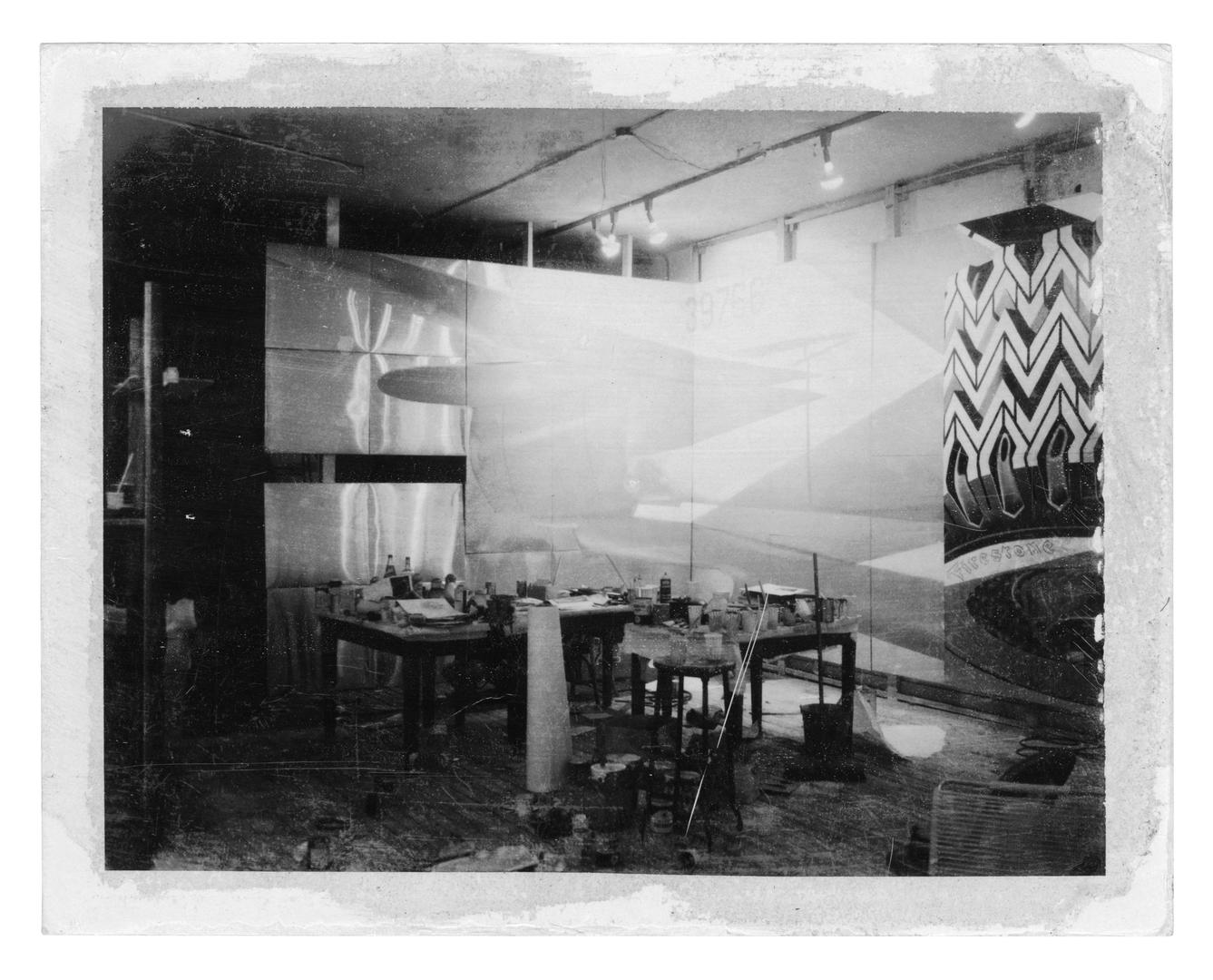F-111: Contemporary History Painting
In 1964, Rosenquist began gathering photographs and information about the F-111 fighter-bomber then in development for the United States military. From these materials he devised the concept for a painting that would incorporate imagery of the warplane, creating extensive collage studies and beginning work on the massive painting in his Broome Street Studio in SoHo, lower Manhattan. Built to the specific measurements of the front room of the Leo Castelli Gallery in New York, the work measured ten feet high by eighty-six feet long when complete and was presented at the Castelli Gallery in spring 1965. Covering all four walls, the painting invaded the visitors’ peripheral vision, with images of consumer products superimposed over the length of the plane depicted from nose to tail. Using the visual language of advertising, Rosenquist created a work that was anything but mundane and pedestrian.
Rosenquist was initially inspired to paint the fighter-bomber after seeing an old, abandoned B-36 plane at a Six Flags amusement park in Texas, and in response to media coverage of the U.S. involvement in Vietnam in the early 1960s. Just as he perceived the amusement park as a "false natural environment," Rosenquist suggested that consumer wealth at that time produced a false sense of security based on the war industry. Civic unrest over the war in Vietnam was beginning to foment in the United States, with small protests on college campuses as early as 1963, and larger-scale demonstrations taking shape in New York, Berkeley, Minneapolis, Washington, D.C., and campuses across America by 1965. This brash, large-scale work was in many ways prescient of the pronounced civil unrest to come, embodying an outsize visual statement that would match the critical voices that were then building against the war. With all the bravura of advertising, Rosenquist created a history painting that crystallized contemporary American life.
—Text by Sarah C. Bancroft, and adapted from Bancroft, "Modern Issues and Current Events" in James Rosenquist: A Retrospective, eds. Walter Hopps and Sarah Bancroft, exh. cat., Solomon R. Guggenheim Museum (New York, 2003); and Bancroft, "James Rosenquist: The Intimate Collage of Monumental Painting" in James Rosenquist: Four Decades: 1970-2010, exh. cat., Galerie Thaddaeus Ropac (Paris, 2016).

Installation view. F-111 (1964-65), Leo Castelli Gallery, New York, 1965. (Colorized version, based on an original b/w photograph.)
Explore


“History is remembered
by its art, not its war
machines.”
“Flying through the flak of
consumer society to question the
collusion between the Vietnam
death machine, consumerism, the
media, and advertising.”

